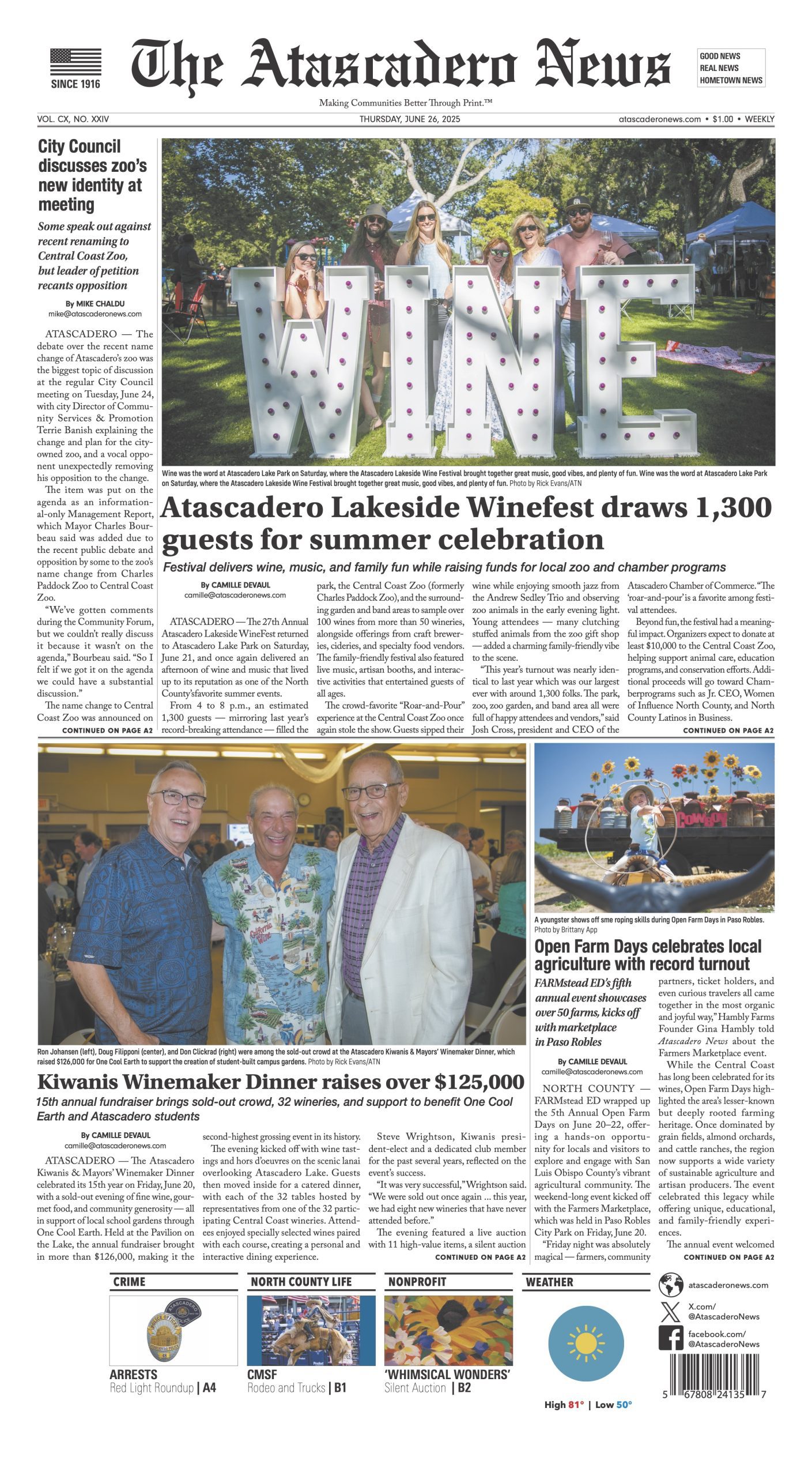
By Brian Maxted
Guest Column for National Ag Week
Ag Week Highlights Farmers’ Resilience, but the Hard Work is Only the Beginning
Soil management, rising input costs, water scarcity still challenge the ag industry
This week, during National Ag Week, we celebrate our farmers, ag workers, and the essential role agriculture plays in maintaining a strong economy.
The theme of National Ag Week, “Food Brings Everyone to the Table,” is a fitting one, as it has been a full year since the COVID-19 pandemic completely changed our nation’s food-supply system and how we all interact with one another.
And as we pick ourselves up from a forgettable 2020 (which saw both national and state Ag Week events canceled at this time a year ago), it is time to start thinking about the long-term health of our industry again.
For those of us in agriculture, we understand sustainable farming never takes a back seat … even during a pandemic. In many instances, these are the farms our fathers and our fathers’ fathers worked before us. This is the ground we are passing on to our children, and we all agree there are no shortcuts for future seasons or generations.
We are also not blind to the fact that most everyone (even in exempt industries such as agriculture) was affected by cutbacks last year, whether market-driven or just due to being budget-conscious during these uncertain times. We have all heard stories about operations having to make the hard decisions to cast aside precision ag tools or crop-required inputs in favor of safety supplies or other COVID-19-related issues. Labor became even tougher to come by in 2020, and additional state and county regulations made day-to-day operations even more challenging for our farmers.
While much of the world was put on hold during the pandemic, California agriculture kept pushing ahead – despite losses estimated between $5.9 and $8.6 billion, according to the California Farm Bureau Federation.
If the past year proved anything, it is that ag is as essential and resilient as ever.
Yes, it is true that “Food Brings Everyone to the Table,” but if we don’t get back to focusing on the other long-term challenges our industry is faced with, putting that food on the table is going to be tougher than ever.
While ag resource issues have not made many headlines over the past year, land degradation, poor soil management, rising input costs, water scarcity, and other drought-related issues continue to plague our industry.
By 2050, our agriculture systems will need to support another 2 billion people, yet, over the last century, the Soil Heath Institute estimates our agricultural soils have lost about half their organic matter, with the “societal and environmental degradation costs” estimated to be as high as $85 billion every year.
But what is often overlooked in articles covering the environmental impact of poor soil management is the cost to our farmers. According to a January report by the University of Colorado, “one-third of the fertilizer applied to grow corn in the U.S. each year simply compensates for the ongoing loss of soil fertility, leading to more than a half-billion dollars in extra costs to U.S. farmers every year.”
The authors called for measures to reduce both the input and environmental costs of farming, “noting the restoration of soil quality through improved management in degraded systems can sequester soil carbon, improve water holding capacity, and decrease nutrient losses.”
For Holloway Agriculture, witnessing the effects of these issues firsthand underscores the importance of building soil-first, sustainable solutions into our company and the economy.
In coming weeks, agriculture officials and state policy makers will be working together on new policies and programs that stimulate the economy and help our industry become part of the solution by prioritizing soil and climate-smart programs for agriculture.
As budget talks heat up, it is critical that programs like the Healthy Soils Program and similar ag-focused initiatives remain front and center, supporting farmers who take the proper steps to improve their soil through precision agriculture and regenerative practices. This helps the industry by reducing input costs, while sequestering carbon and reducing greenhouse gas emissions at the same time.
Grim reports like the University of Colorado’s “The Hidden Costs of Land Degradation in U.S. Maize Agriculture,” come to no surprise. Agriculture is constantly under the spotlight when it comes to soil and water management, but we can combat these storylines and rising input costs with improved management techniques:
- Our farmers can create healthy soils that minimize nitrogen losses while maintaining high productivity.
- We can leverage naturally occurring minerals and soil amendments to improve soil health and crop water use efficiency while cutting back nutrient losses and capturing more carbon in our soils.
- We can use precision ag practices that better reintroduce organic matter back into the land and return the soil profile back to an optimal state for maximum production without environmental impact.
It is a lot of work to feed our growing planet, pandemic or not. But if we have proven anything over this past year, it’s that our industry is a resilient one, and we never turn our back to our biggest challenges.
Thanks to everyone in the ag industry for their contributions over the past year. We cannot wait to see what is ahead for the 2021 season and beyond. Food brings everyone to the table, and no one in the agriculture industry takes that work for granted.
Brian Maxted is CEO of Holloway Agriculture, a provider of soil-first solutions and services out of Bakersfield, Calif. Learn more at hollowayag.com.










